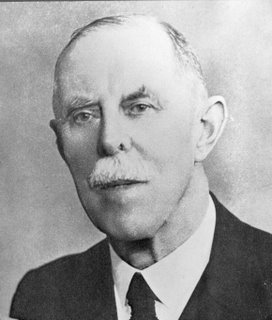 Pouring the Past Into the Present
Pouring the Past Into the PresentWhile F W Boreham had a profound reverence for life in the world of nature, his editorials reveal that he also had an intense fascination for the historical study of human nature. His conversion to history took place at Mosgiel in 1900 when, through the reading of Gibbon’s Decline and fall of the Roman Empire, Boreham was hooked on history. Boreham’s voracious appetite for history and his views about historical method and style were nurtured by his reading of other historians besides Gibbon, including Britisher Thomas Macaulay and the American, Eurocentric historians George Bancroft[1] and William Hickling Prescott.[2] Boreham contended that “the art of life consists in compelling the past to pour its enrichment into the present in such a way as to ensure a still more roseate future”.[3]
Childhood Influences
While the Gibbon experience was significant Boreham’s regard for history was being shaped much earlier. Childhood influences upon Boreham background included the industrial expansion, the development of the rail, the discoveries in science and the burgeoning imperialism all of which contributed to Britain’s sense of advancement. These were examples of human progress, a conviction that was foundational to Boreham’s understanding of the role and value of history. Shaping his views about the upward march of history was the ‘Christian optimism’ fostered by the church and a theological education that typically presented history “as a straight line of God’s purpose running from creation through his chosen people to the present. History was moving forward”.[4] One cannot underestimate the significance of Boreham’s ‘conversion’ to historical study for in tracing the development of evangelicalism (Boreham’s early tradition) Bernard Reardon said, “Of religion as a historical and cultural phenomenon, to be studied as such, it [evangelicalism], needless to say, had no conception. Even the history of Christianity as a major phase in the education of the human race did not interest it”.[5]
Inevitably, Boreham’s understanding of history was shaped by several popular writers. With Gibbon and Macaulay providing a historical framework for the notion of human progress (intellectually and morally), Spencer and Darwin presenting their social theories about the evolving life of humanity and Dickens “who preached in many of his novels a doctrine of improvement” there was a rising optimism that characterized the mood of Victorian England.[6] These writers interpreted and heightened the temper of the times in which Boreham’s views about history were being formed.
Whilst Boreham’s view on history may not be universally accepted by professional historians today, David Levin’s History as romantic art, in which he focuses on the histories of George Bancroft, William Prescott, John Motley and Francis Parkman, is useful for helping to understand the historical tradition that Boreham sought to emulate. Levin portrays “the historian as romantic man of letters”, as one who is attentive to literary style and artistry, exhibiting the romantic preference for ‘heart over head’ and a discerner of national progress.[7]
Geoff Pound
Image: F W Boreham: 'hooked on history'.
[1]George Bancroft (1800-1891) was a historian, politician, author of the 10-volume History of the United States and US minister to Great Britain (1846-1849). More information about Bancroft may be found in the DAB ed. Allen Johnson vol. 1 (London: Humphrey Milford-Oxford University Press, 1935), 564-570.
[2] William Hickling Prescott (1796-1859) was a historian known for his works on Mexico, Peru and Spanish rulers. More information about Prescott can be found in the DAB ed. Dumas Malone vol. 15 (London: Humphrey Milford-Oxford University Press, 1935), 196-200.
[3] F W Boreham, Mercury, 22 June 1946; Age, 6 January 1951.
[4] David W Bebbington, Patterns in history: A Christian perspective on historical thought (Leicester: Apollos, 1979), 49-50.
[5] Bernard M G Reardon, From Coleridge to Gore: A century of religious thought in Britain (London: Longman, 1971), 30.
[6] Bebbington, Patterns in history, 83.
[7] David Levin, History as romantic art: Bancroft, Motley, and Parkman (Stanford, California: Stanford University Press, 1959), 3-22.


